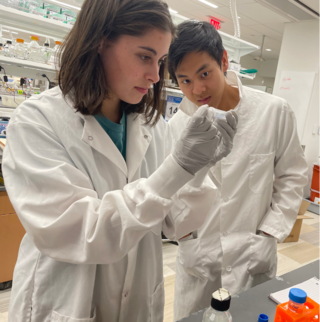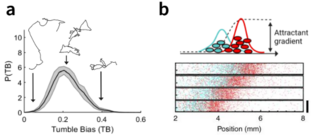
Lam working with PEB summer undergraduate researcher Isabel Burger.
Lam Vo ‘26
(he/him)
Home Department: Molecular, Cellular, and Developmental Biology (Emonet Lab)
Research Project: Investigating non-genetic adaptation by collective migration
I’m interested in understanding how the tug-of-war between phenotypic diversity and collective behaviors enable cell populations to survive, using bacterial collective migration as a model system. Bacterial cells travel together by consuming attractants in their environment and forming their own gradient to follow, yet they exhibit diverse motility behaviors. To migrate together, cells must spatially organize themselves along the gradient they generate, with better swimmers leading at the front and worse swimmers staying at the back, eventually falling behind the group. I’m investigating how migrating bacterial populations utilize this spatial organization to: 1) quickly adapt their phenotypic compositions to the environments they navigate, and 2) perform virulence division of labor when infecting hosts.
Relevant Publications

Even within a bacterial population with one genotype, individual bacteria exhibit diverse motility behaviors (a). Yet, they can coordinate behaviors like collective migration (b). This tug-of-war between phenotypic diversity and collective behavior leads to spatial organization, with high performers (red) at the front of the migrating group and low performers (cyan) follow behind.